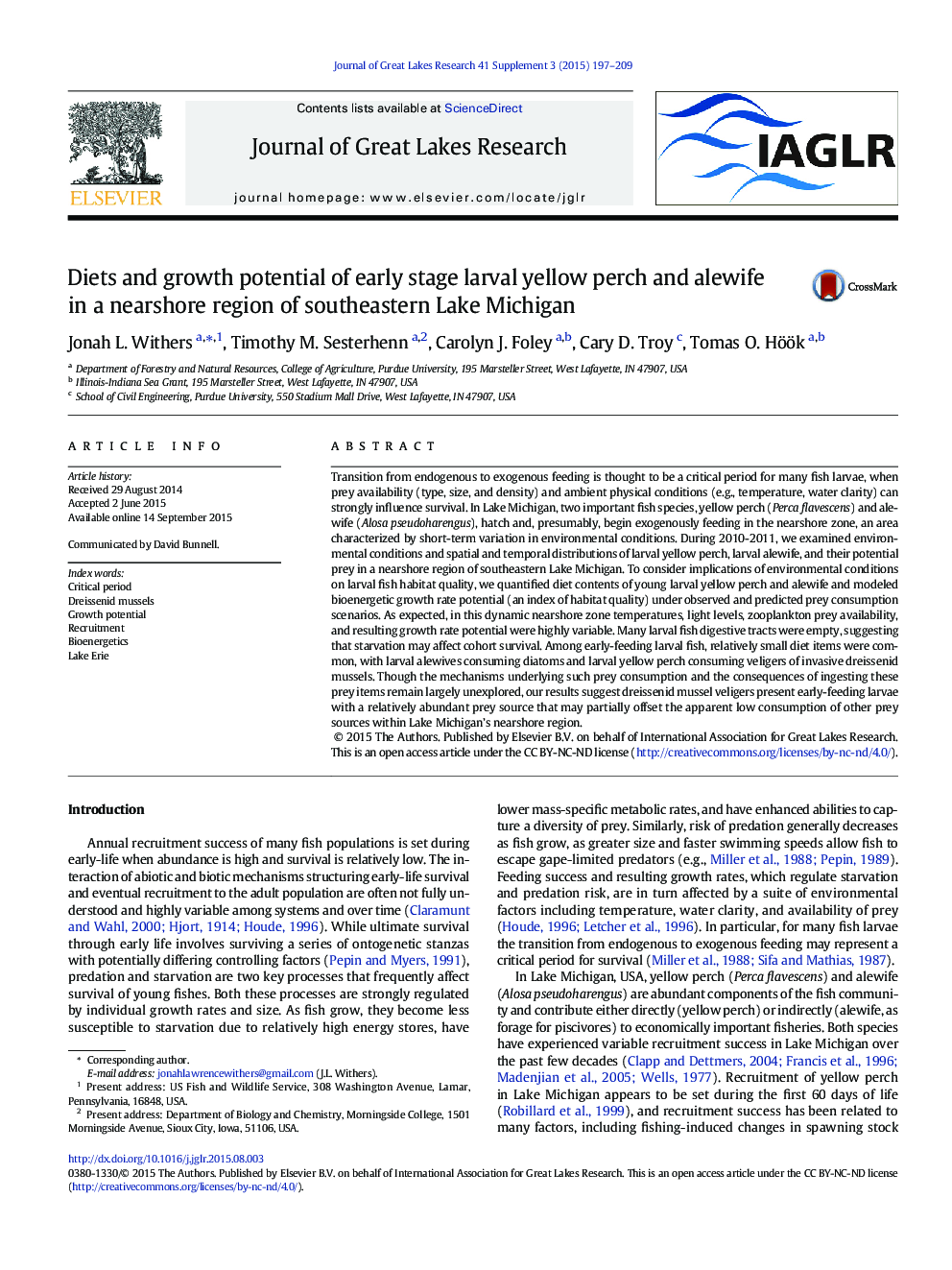| Article ID | Journal | Published Year | Pages | File Type |
|---|---|---|---|---|
| 6304929 | Journal of Great Lakes Research | 2015 | 13 Pages |
Abstract
Transition from endogenous to exogenous feeding is thought to be a critical period for many fish larvae, when prey availability (type, size, and density) and ambient physical conditions (e.g., temperature, water clarity) can strongly influence survival. In Lake Michigan, two important fish species, yellow perch (Perca flavescens) and alewife (Alosa pseudoharengus), hatch and, presumably, begin exogenously feeding in the nearshore zone, an area characterized by short-term variation in environmental conditions. During 2010-2011, we examined environmental conditions and spatial and temporal distributions of larval yellow perch, larval alewife, and their potential prey in a nearshore region of southeastern Lake Michigan. To consider implications of environmental conditions on larval fish habitat quality, we quantified diet contents of young larval yellow perch and alewife and modeled bioenergetic growth rate potential (an index of habitat quality) under observed and predicted prey consumption scenarios. As expected, in this dynamic nearshore zone temperatures, light levels, zooplankton prey availability, and resulting growth rate potential were highly variable. Many larval fish digestive tracts were empty, suggesting that starvation may affect cohort survival. Among early-feeding larval fish, relatively small diet items were common, with larval alewives consuming diatoms and larval yellow perch consuming veligers of invasive dreissenid mussels. Though the mechanisms underlying such prey consumption and the consequences of ingesting these prey items remain largely unexplored, our results suggest dreissenid mussel veligers present early-feeding larvae with a relatively abundant prey source that may partially offset the apparent low consumption of other prey sources within Lake Michigan's nearshore region.
Related Topics
Physical Sciences and Engineering
Earth and Planetary Sciences
Earth and Planetary Sciences (General)
Authors
Jonah L. Withers, Timothy M. Sesterhenn, Carolyn J. Foley, Cary D. Troy, Tomas O. Höök,
